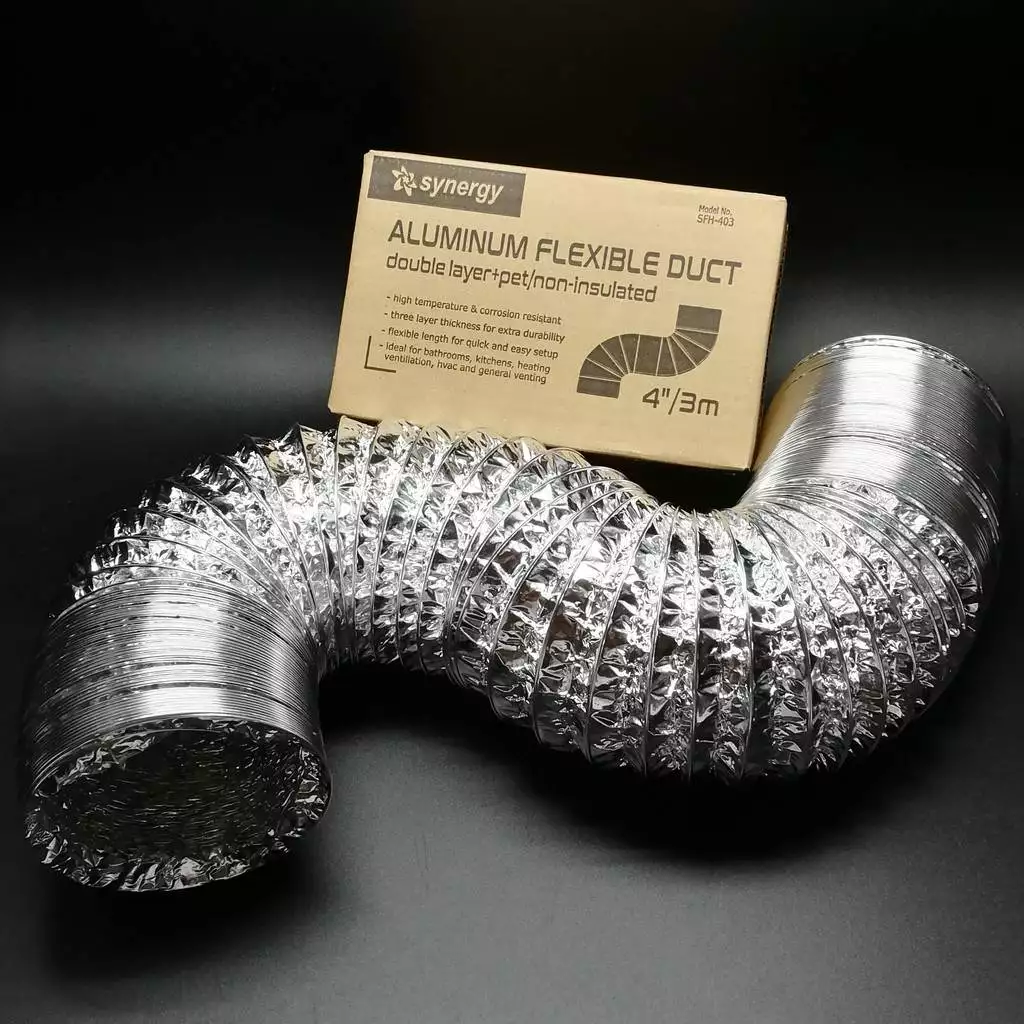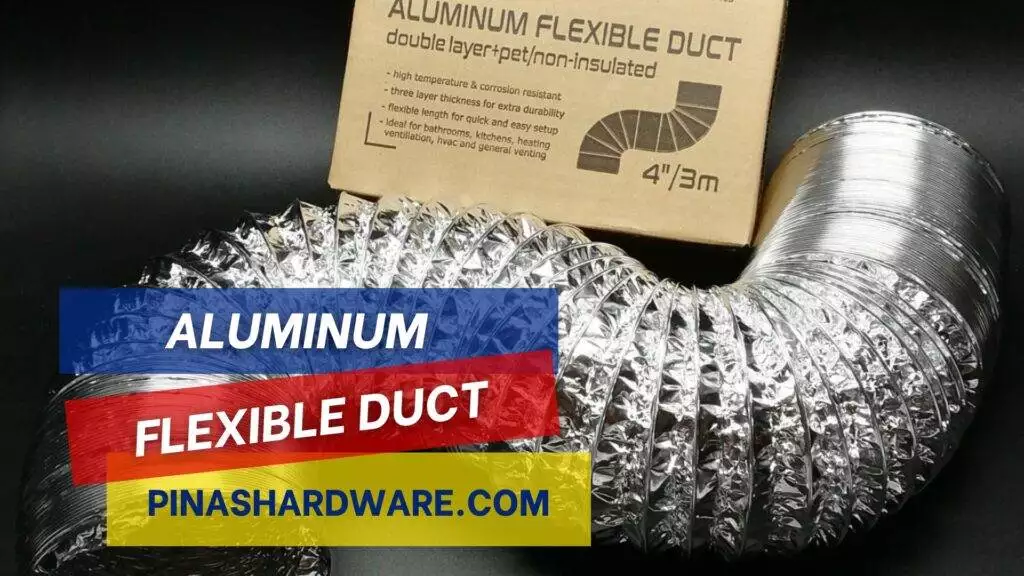Aluminum flexible duct is a popular ductwork type used in heating, ventilation, and air conditioning (HVAC) systems. It is made of pliable aluminum foil that is easily bent and shaped to fit different installation requirements because it is encased in a spiral wire helix. Durability, resistance to corrosion, and fire-retardant qualities are provided by aluminum construction, guaranteeing longevity and safety. In addition to reducing air leakage, these ducts help move air between HVAC components like air handlers, vents, and registers in an effective and dependable manner. They are perfect for use in small or cramped areas of residential, commercial, and industrial buildings due to their flexibility and lightweight design.
Aluminum Flexible Duct Prices
Aluminum Flexible Duct prices vary depending on its brand, length, diameter, and material. Its price ranges from ₱128.00 to ₱889.00.
| Details | Length | Diameter | Material | Price |
| Quality | 3 m | 100 mm | Aluminum Foil, Metal | ₱339.00 |
| Quality | 5 m | 150 mm | Aluminum Foil, Metal | ₱889.00 |
| Quality | 3 m | 200 mm | Aluminum Foil, Metal | ₱599.00 |
| Zdcwu | 5 m | 80 mm | Aluminum Foil | ₱635.00 |
| Exquisite | 2 m | 100 mm | Aluminum Foil | ₱128.00 |
| Exquisite | 3 m | 100 mm | Aluminum Foil | ₱188.00 |

Advantages of Aluminum Flexible Duct
Flexibility – They don’t require extra fittings or connectors because of their flexible design, which makes it simple to bend and shape them to fit a variety of installation configurations and small spaces.
Installation Ease – Compared to rigid ductwork systems, aluminum flexible ducts are lightweight and simple to handle, which minimizes labor costs and installation time.
Corrosion Resistance – These ducts’ aluminum construction prevents corrosion, guaranteeing their longevity and durability even in moist or corrosive environments.
Fire Resistance – The intrinsic fire-retardant qualities of aluminum construction improve safety by lowering the possibility of a fire spreading through the ductwork.
Disadvantages of Aluminum Flexible Duct
Condensation – If the ducts are not properly insulated, condensation may form within them in humid environments. This may result in problems with moisture, like the growth of mold, lowered air quality, and possible duct material damage.
Air Leakage – If aluminum flexible ducts are not properly sealed, air leakage may occur, particularly at the joints or connections. This may lead to energy loss and a decrease in the HVAC system’s overall efficiency.
Durability Concerns – Despite aluminum’s resistance to corrosion, the ducts’ flexibility can make them more vulnerable to tearing, punctures, and crushing—especially in high-traffic areas or if handled incorrectly during installation or maintenance.
Limited Airflow – The ducts’ pliable structure may eventually allow them to collapse or sag, which would limit airflow and lower the HVAC system’s efficiency. If the ducts are installed with too many bends or stretches, this might happen.
Video of Aluminum Flexible Duct
FAQs
When and where are flexible aluminum ducts used?
In residential, commercial, and industrial buildings, aluminum flexible ducts are frequently utilized for HVAC systems, which include heating, ventilation, and air conditioning. They can also be utilized for dryers, restrooms, and kitchen exhaust systems.
How should flexible aluminum ducts be installed?
Using the proper connectors, clamps, or tape, aluminum flexible ducts are usually installed by stretching and fastening them between HVAC components. To stop air leaks, joints and connectors must be properly sealed.
Are aluminum flexible ducts suitable for all HVAC systems?
Despite their widespread use, aluminum flexible ducts might not be appropriate for every HVAC system, especially those that need rigid ductwork to meet certain pressure ratings or airflow requirements. It is advisable to confirm compatibility with the system manufacturer or an HVAC specialist.
How can condensation be avoided in flexible aluminum ducts?
By using the right insulation materials to insulate the ducts, condensation can be avoided. Insulation lowers the chance of moisture accumulation and the growth of mold by assisting in the maintenance of constant temperatures inside the ducts.
Which kinds of insulation work well with flexible aluminum ducts?
A variety of insulation materials, such as foam, fiberglass, and other forms of thermal insulation, can be used with aluminum flexible ducts. Sufficient insulation reduces condensation and enhances energy efficiency.


